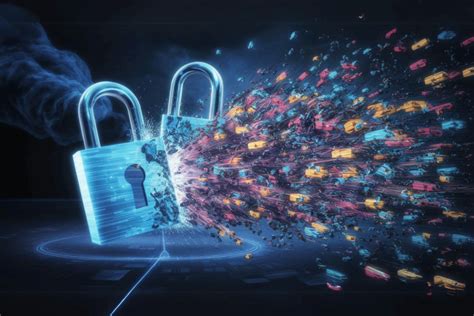
A massive data breach has potentially exposed the login credentials of 184 million U.S. internet users, prompting cybersecurity experts to urge immediate action to secure online accounts. The compromised data, discovered by Cybernews, includes usernames, passwords, and other sensitive information, raising the risk of account takeovers, identity theft, and financial fraud.
Cybersecurity researchers at Cybernews discovered a massive compilation of breached credentials affecting a staggering 184 million U.S. users. This vast dataset, circulating within underground online communities, contains usernames, passwords, and potentially other sensitive data pilfered from various past breaches and leaks. The discovery has triggered urgent warnings from cybersecurity experts, urging individuals to take immediate steps to protect their online accounts.
The implications of this breach are far-reaching. With compromised login credentials in the hands of malicious actors, the risk of account takeovers, identity theft, and financial fraud skyrockets. Cybercriminals can leverage these stolen credentials to access email accounts, social media profiles, online banking portals, and a host of other sensitive platforms.
“This is a significant breach that puts millions of Americans at risk,” warned a spokesperson for Cybernews. “We urge everyone to check if their information has been compromised and to take immediate steps to secure their accounts.”
The massive scale of the breach underscores the ongoing vulnerability of online data and the persistent threat posed by cybercriminals. It also highlights the importance of practicing robust password management techniques, enabling multi-factor authentication, and remaining vigilant against phishing scams.
Understanding the Scope of the Breach
The sheer volume of affected accounts is alarming. 184 million accounts represent a significant portion of the U.S. internet user base, indicating that a substantial number of individuals are potentially vulnerable. The data compilation, reportedly assembled from numerous past breaches, signifies the long-term impact of data breaches and the accumulation of compromised information over time.
The types of information included in the breach are particularly concerning. Usernames and passwords are the keys to accessing online accounts. With these credentials in hand, cybercriminals can impersonate users, steal personal data, make unauthorized purchases, and engage in other malicious activities. The potential compromise of “other sensitive data” further exacerbates the risk. This could include security questions, addresses, phone numbers, or other personal information that can be used for identity theft or social engineering attacks.
Immediate Actions to Protect Your Accounts
Cybersecurity experts recommend taking the following steps immediately to mitigate the risk posed by this breach:
-
Check if Your Email Address Has Been Compromised: Use a reputable data breach monitoring service to check if your email address has been exposed in any past breaches. Several free and paid services are available, such as Have I Been Pwned (HIBP). Simply enter your email address, and the service will scan its database of known breaches to identify any potential compromises.
-
Change Your Passwords Immediately: If your email address appears in any of the listed breaches, change your passwords immediately for all affected accounts. Choose strong, unique passwords for each account. A strong password should be at least 12 characters long and include a combination of uppercase and lowercase letters, numbers, and symbols. Avoid using easily guessable information, such as your name, birthday, or pet’s name.
-
Enable Multi-Factor Authentication (MFA): Whenever possible, enable multi-factor authentication (MFA) on your accounts. MFA adds an extra layer of security by requiring you to provide a second form of verification, such as a code sent to your phone or a fingerprint scan, in addition to your password. This makes it much more difficult for cybercriminals to access your accounts, even if they have your password.
-
Be Wary of Phishing Scams: Be extra cautious of phishing scams, which are designed to trick you into revealing your personal information. Cybercriminals may use the compromised data to craft convincing phishing emails or text messages. Never click on links or open attachments from unknown senders. Always verify the legitimacy of any request for personal information before responding.
-
Use a Password Manager: Consider using a password manager to generate and store strong, unique passwords for all of your accounts. Password managers can also help you keep track of your passwords and automatically fill them in when you visit a website. Some popular password managers include LastPass, 1Password, and Dashlane.
Why This Breach is Significant
The sheer scale of this breach, affecting 184 million U.S. accounts, sets it apart from many other data breaches. The vast number of compromised accounts increases the potential for widespread damage and underscores the urgency of taking protective measures.
Moreover, the compilation of data from multiple past breaches highlights the cumulative risk of data breaches. Each breach, no matter how small, contributes to the growing pool of compromised data that cybercriminals can exploit. This underscores the importance of remaining vigilant and proactive in protecting your online accounts, even if you believe you have not been affected by a previous breach.
The fact that the breached data is circulating within underground online communities is also concerning. This means that the data is readily available to cybercriminals, who can use it to launch attacks against unsuspecting victims. The longer the data remains in circulation, the greater the risk of it being used for malicious purposes.
The Role of Data Breach Monitoring Services
Data breach monitoring services play a crucial role in helping individuals stay informed about potential compromises of their personal information. These services continuously scan databases of known breaches and alert users if their email address or other personal data has been exposed.
By providing timely alerts, data breach monitoring services empower individuals to take proactive steps to mitigate the risk of identity theft and other cybercrimes. They can also help individuals identify which accounts are at risk and prioritize password changes accordingly.
While data breach monitoring services are not foolproof, they can be a valuable tool for protecting your online security. By subscribing to a reputable service and monitoring your email address regularly, you can stay one step ahead of cybercriminals and minimize the potential damage from data breaches.
Long-Term Strategies for Online Security
In addition to taking immediate action to protect your accounts, it is also important to adopt long-term strategies for online security. These strategies include:
-
Regularly Reviewing Your Accounts: Periodically review your online accounts for any suspicious activity. Check your bank statements, credit card statements, and other financial records for unauthorized transactions. Monitor your credit report for any signs of identity theft.
-
Being Careful About What You Share Online: Be mindful of the information you share online, especially on social media. Avoid sharing sensitive personal information, such as your address, phone number, or date of birth.
-
Keeping Your Software Up to Date: Keep your software up to date, including your operating system, web browser, and antivirus software. Software updates often include security patches that fix vulnerabilities that cybercriminals can exploit.
-
Educating Yourself About Cybersecurity: Stay informed about the latest cybersecurity threats and best practices. The more you know about cybersecurity, the better equipped you will be to protect yourself from online attacks.
The Importance of Strong Passwords
The importance of strong passwords cannot be overstated. Passwords are the first line of defense against cyberattacks, and a weak password can be easily cracked by cybercriminals.
A strong password should be at least 12 characters long and include a combination of uppercase and lowercase letters, numbers, and symbols. Avoid using easily guessable information, such as your name, birthday, or pet’s name.
It is also important to use a unique password for each of your accounts. If you use the same password for multiple accounts, a cybercriminal who compromises one account can gain access to all of your accounts.
Using a password manager can help you generate and store strong, unique passwords for all of your accounts. Password managers can also help you keep track of your passwords and automatically fill them in when you visit a website.
The Growing Threat of Cybercrime
Cybercrime is a growing threat that affects individuals, businesses, and governments around the world. Cybercriminals are constantly developing new and sophisticated techniques to steal personal information, commit financial fraud, and disrupt critical infrastructure.
The cost of cybercrime is estimated to be in the trillions of dollars each year. This cost includes the direct costs of cyberattacks, such as financial losses and data breaches, as well as the indirect costs, such as lost productivity and reputational damage.
To combat cybercrime, it is essential for individuals, businesses, and governments to work together. Individuals need to take steps to protect their online accounts and be aware of the latest cybersecurity threats. Businesses need to invest in cybersecurity measures and train their employees on cybersecurity best practices. Governments need to develop and enforce cybersecurity laws and regulations.
Cybernews’ Role in Discovering the Breach
Cybernews, the cybersecurity research organization that uncovered this massive breach, has a dedicated team of experts who specialize in identifying and analyzing data breaches. Their work is critical in alerting the public to potential threats and helping individuals and organizations take steps to protect themselves.
The discovery of this breach highlights the importance of independent cybersecurity research. By proactively searching for and analyzing data breaches, organizations like Cybernews play a vital role in safeguarding the online security of individuals and businesses.
The Legal and Regulatory Landscape
Data breaches are often subject to legal and regulatory requirements. In the United States, many states have data breach notification laws that require businesses to notify individuals if their personal information has been compromised.
The European Union’s General Data Protection Regulation (GDPR) also imposes strict requirements on businesses that collect and process personal data. Under the GDPR, businesses must implement appropriate security measures to protect personal data and notify data protection authorities of any data breaches.
These laws and regulations are designed to protect individuals’ privacy and ensure that businesses are held accountable for protecting personal data.
The Future of Cybersecurity
The future of cybersecurity is likely to be characterized by increasingly sophisticated cyberattacks and a growing reliance on artificial intelligence (AI) to defend against these attacks.
Cybercriminals are constantly developing new and innovative techniques to evade security measures and steal personal information. They are also increasingly using AI to automate their attacks and make them more difficult to detect.
To counter these threats, cybersecurity professionals are also increasingly using AI to develop new security tools and techniques. AI can be used to detect and respond to cyberattacks in real-time, as well as to predict future attacks and proactively prevent them.
The ongoing battle between cybercriminals and cybersecurity professionals is likely to continue for the foreseeable future. As technology evolves, so too will the threats and the defenses. It is essential for individuals, businesses, and governments to stay informed about the latest cybersecurity trends and to invest in the necessary measures to protect themselves from cyberattacks.
The Human Element of Cybersecurity
While technology plays a crucial role in cybersecurity, the human element is equally important. Many cyberattacks are successful because of human error, such as clicking on a phishing link or using a weak password.
To improve cybersecurity, it is essential to educate individuals about the risks of cybercrime and to train them on cybersecurity best practices. This includes teaching them how to identify phishing scams, how to create strong passwords, and how to protect their personal information online.
By empowering individuals with the knowledge and skills they need to protect themselves, we can significantly reduce the risk of cyberattacks.
Conclusion
The massive data breach affecting 184 million U.S. accounts is a stark reminder of the ongoing threat of cybercrime. By taking immediate action to protect your accounts, adopting long-term strategies for online security, and staying informed about the latest cybersecurity trends, you can significantly reduce your risk of becoming a victim of cybercrime. The discovery underscores the need for constant vigilance, proactive security measures, and a commitment to staying informed about the evolving threat landscape.
Frequently Asked Questions (FAQ)
-
How do I know if my account was part of the 184 million accounts breached?
You can use a data breach monitoring service like Have I Been Pwned (HIBP) to check if your email address has been exposed in any known data breaches. Simply enter your email address on the HIBP website, and it will search its database to see if your address appears in any breaches. If your email address is listed, it’s important to take immediate steps to secure your accounts. Remember that HIBP only shows known breaches, so your email might still be compromised even if it doesn’t show up in their search. “This is a significant breach that puts millions of Americans at risk,” warned a spokesperson for Cybernews. “We urge everyone to check if their information has been compromised and to take immediate steps to secure their accounts.”
-
What steps should I take if my email address has been found in a data breach?
If your email address appears in a data breach, immediately change your passwords for all affected accounts. Choose strong, unique passwords for each account, avoid reusing passwords across multiple platforms, and enable multi-factor authentication (MFA) wherever possible. Also, be vigilant about phishing attempts, as cybercriminals may use the compromised data to target you with convincing scams.
-
What is multi-factor authentication (MFA), and how does it protect my accounts?
Multi-factor authentication (MFA) adds an extra layer of security to your accounts by requiring a second form of verification in addition to your password. This second factor can be a code sent to your phone, a biometric scan (fingerprint or facial recognition), or a security key. Even if a cybercriminal obtains your password, they will still need the second factor to access your account, making it much more difficult for them to gain unauthorized access.
-
What makes a password “strong,” and how can I create strong passwords?
A strong password should be at least 12 characters long and include a combination of uppercase and lowercase letters, numbers, and symbols. Avoid using easily guessable information, such as your name, birthday, pet’s name, or common words. A password manager can help you generate and store strong, unique passwords for all your accounts.
-
Are password managers safe to use, and which ones are recommended?
Reputable password managers are generally safe to use and offer a secure way to store and manage your passwords. Some popular password managers include LastPass, 1Password, and Dashlane. These services use strong encryption to protect your passwords and can also generate strong, unique passwords for your accounts. Research and choose a password manager with a good reputation and a proven track record of security. Ensure you use a strong master password for your password manager account itself.









